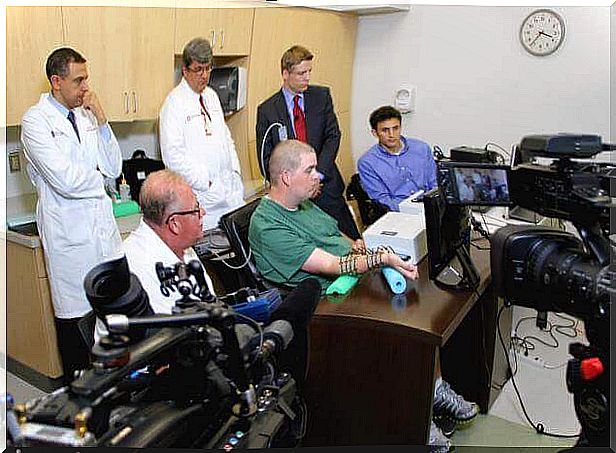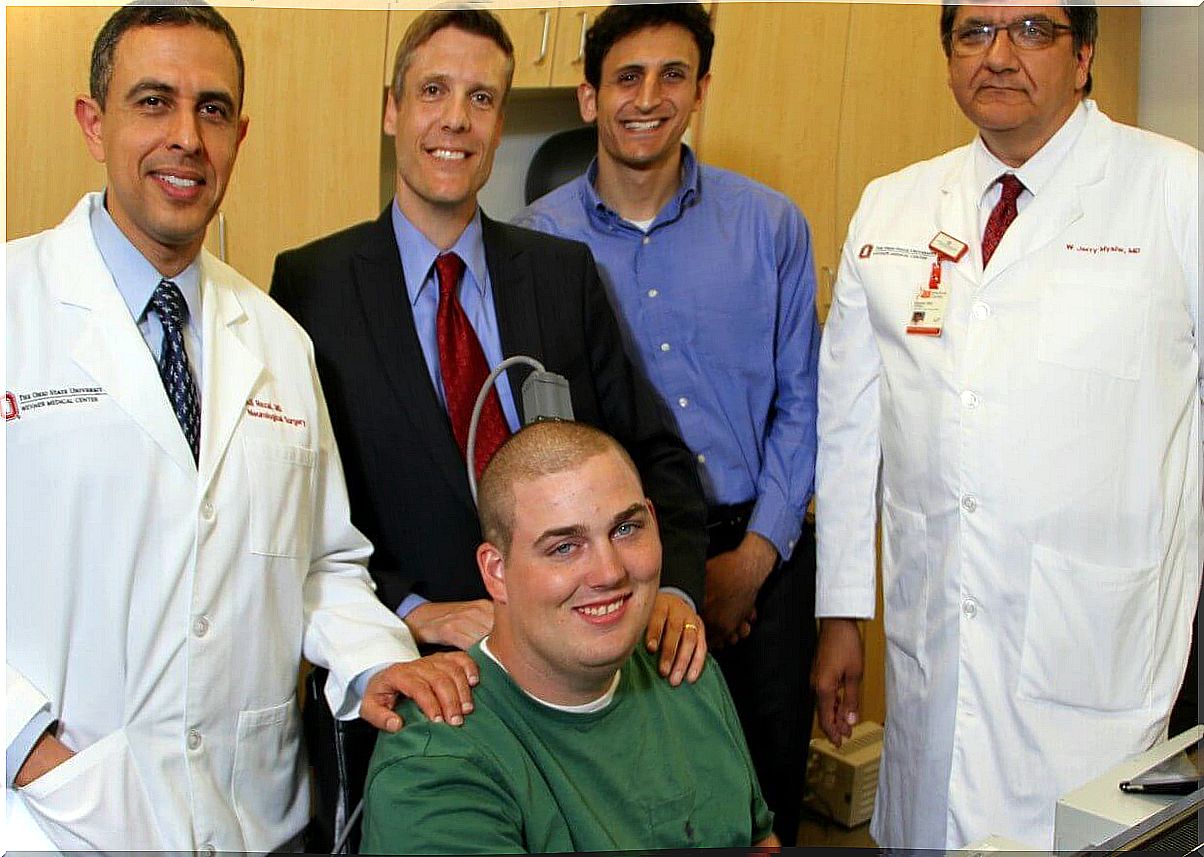Ian, The First Quadriplegic Who Already Moves His Fingers
Ian Burkhart is 24 years old and, at only 19, his life was forever paralyzed. After a diving accident, he was left quadriplegic, thus becoming a dependent person who had a hard time assuming his new reality.
Now, 5 years later, he considers himself “a lucky person.” The reason? The Battelle Memorial Institute, a non-profit research center, chose him to participate in a clinical trial that is achieving spectacular results.
Ian now smiles hopefully. This kind-eyed quadriplegic boy is already moving his fingers and hands, and his world has changed dramatically overnight.
We explain why.
The first quadriplegic to move his fingers

The project Ian has undergone is called “NeuroLife”.
After the FDA (Food and Drug Administration of the United States Government) approved the treatment, Ian was the first patient chosen to start an experimental project with a very clear ending: restore mobility to people with quadriplegia.
More progress and more tests are undoubtedly needed, but for the moment, what has been achieved is a great achievement: the mobility of the fingers.
The system
The team of neurologists and scientists and engineers of the “NeuroLife” project has been working on this idea for more than 10 years, which can be summarized in these strategies:
- There are three key elements: a bypass , a muscle stimulation sleeve, and a computer. All three together act like an artificial spinal cord.
- All three systems work by making connections between the brain and the muscles of the damaged limbs.
- The bypass picks up the electrical signals in the brain that order movements.
- The computer, for its part, encodes the commands and generates muscle stimulation to execute the movements.
- All this magical bionic craftsmanship happens in less than a tenth of a second from when the patient thinks about performing the movement until it occurs. Something fantastic.
A tough but hopeful process for Ian
When one is tetraplegic, they do not understand refusals or close the door to any strategy with which to optimize their condition. Any small improvement is a hope, and for that reason, Ian did not hesitate to say yes to the proposal.
- To do this, he had to undergo an operation of more than 3 hours to implant the chip in the motor cortex.
- After the intervention, he had to undergo daily training, which lasted more than 15 months, to get his brain to adapt to the three devices: the bypass , the chip and the computer.
- The chip is wired to a screwed port in your skull and attached to another cable that goes to the computer. It is complex, no doubt, but, as the scientists explain, as Ian acquires a wider range of movements, they will create other simpler and more practical systems.
- Today Ian can move all his fingers and wrists. He can grab objects, swipe a credit card through a slot, pour water into a jug, roll dice, answer the phone, and even manage certain video games already.
It’s just the beginning

Nick Anetta, one of those responsible for the project, points out that “this is only the beginning.” His next goal is to design friendlier and lighter devices so that Ian can lead a more autonomous life with these instruments that generate his movements.
A new patient
During this summer operations will begin so that a new patient also has the “NeuroLife”. Despite being a non-profit organization, it certainly needs more funding, because the ultimate purpose is to stimulate not only movement in the fingers and hands, but also in the legs, the back.
Project financing
One important point should be noted. Something that can happen is that these chips produce some rejection after the years.
Thus, the implants would need to be changed every few years, so the need for financing remains very high , and this is the biggest problem they find at the Batelle Memorial Institute.
Despite this, the medical team is not going to give up, because there is nothing as rewarding as contemplating the hopeful smile of a person who sees how, finally, mobility in their hands is restored.
As insignificant as it may seem, these simple movements of the fingers are “universes of happiness” for all patients suffering from tetraplegia.
We therefore hope that in the coming years we can read more positive news about this incredible project. We leave you with the video about Ian so that you also share the joy of this young man.









